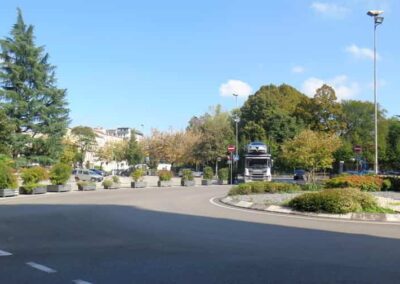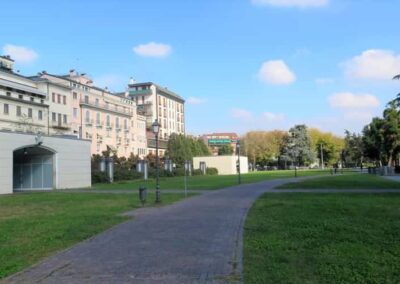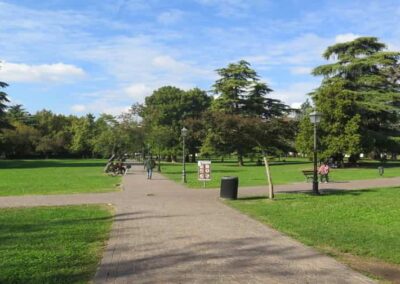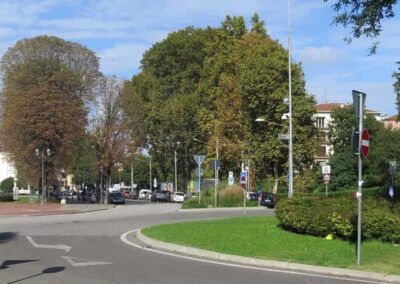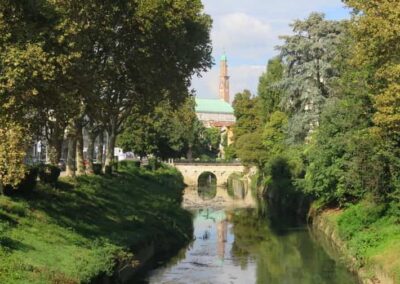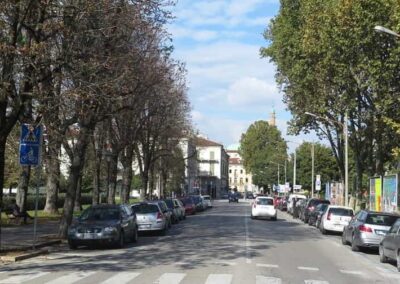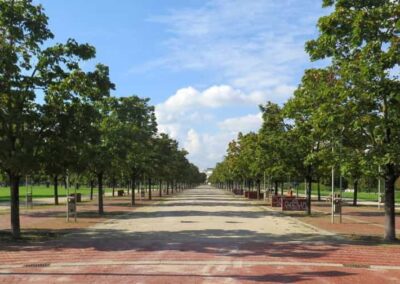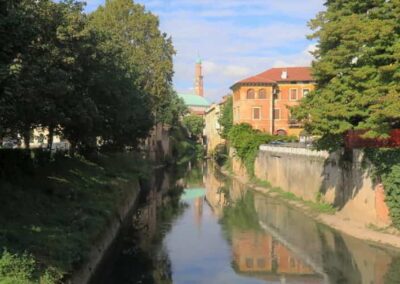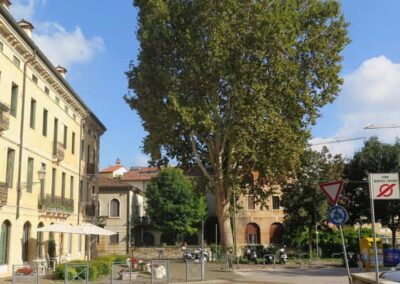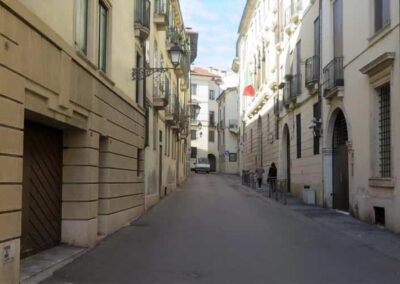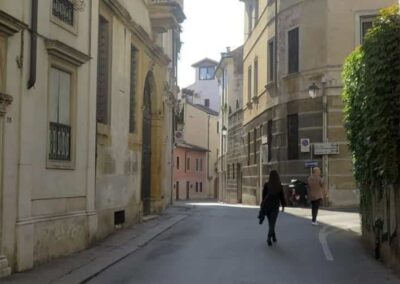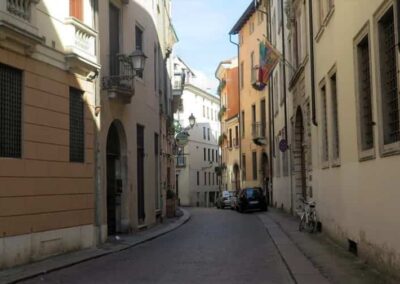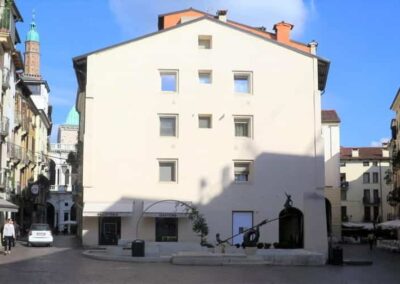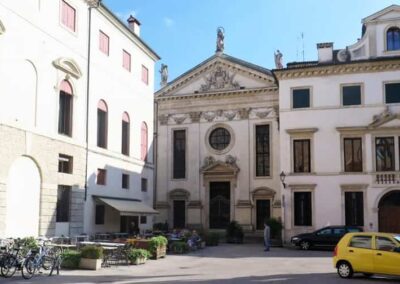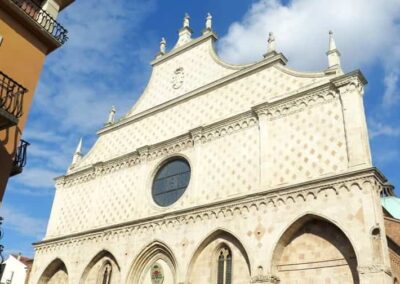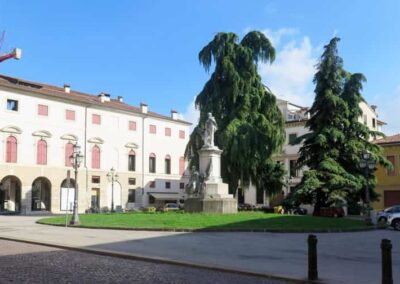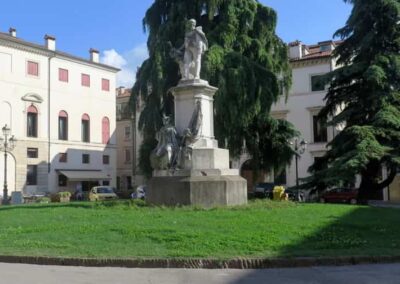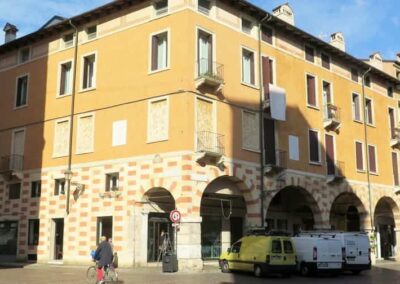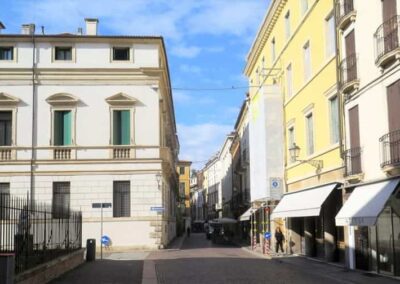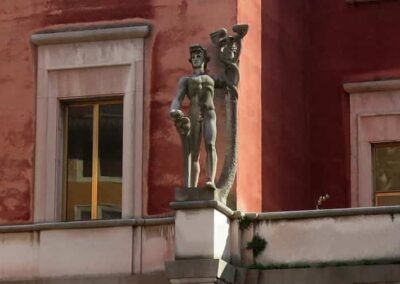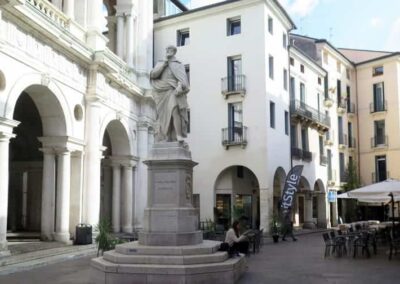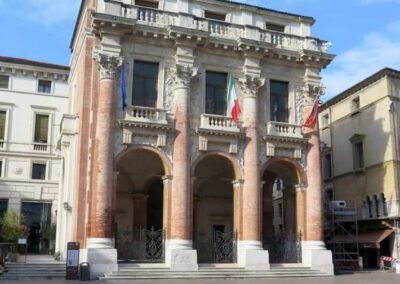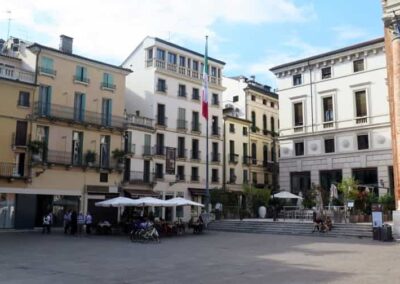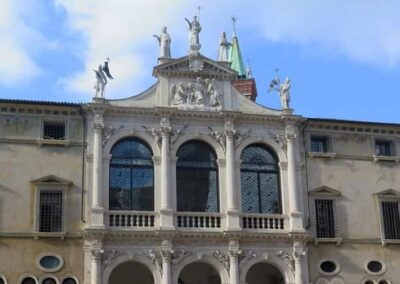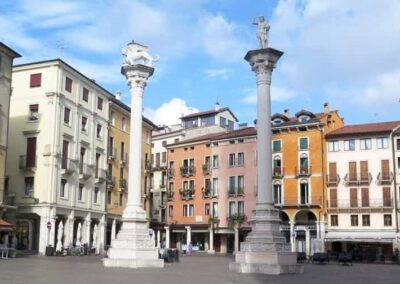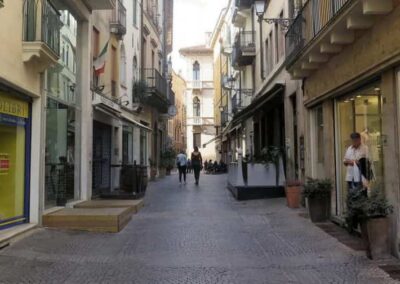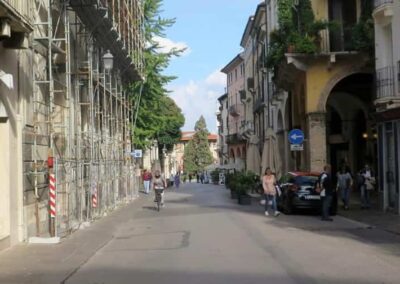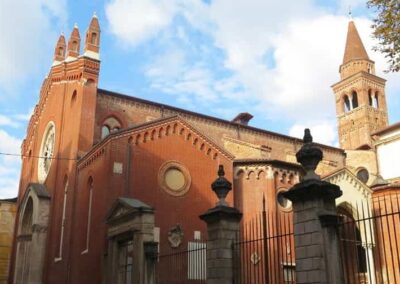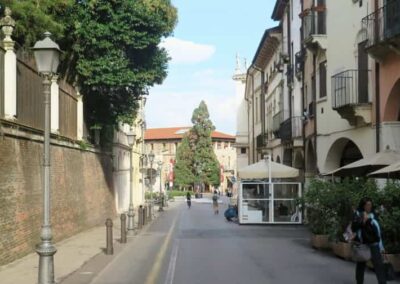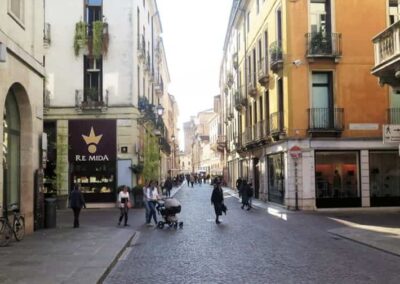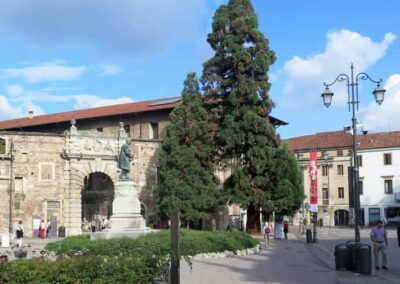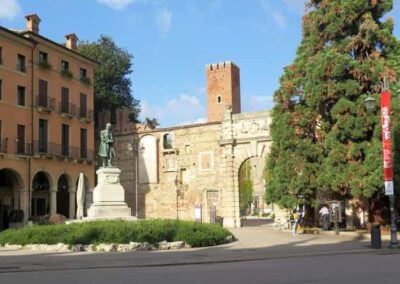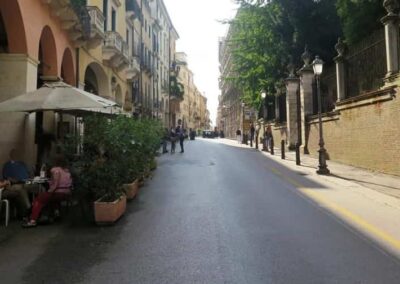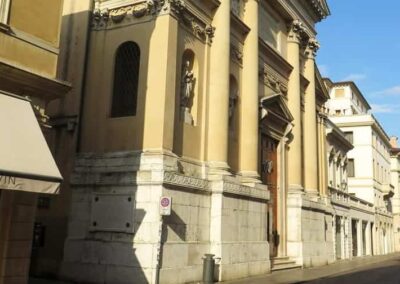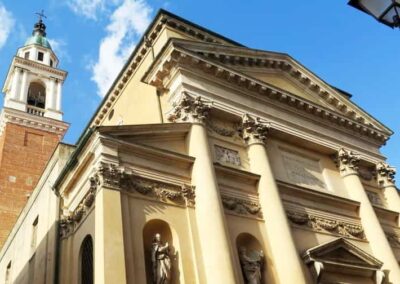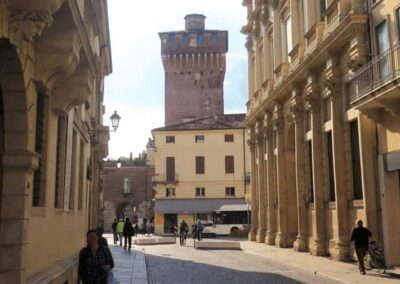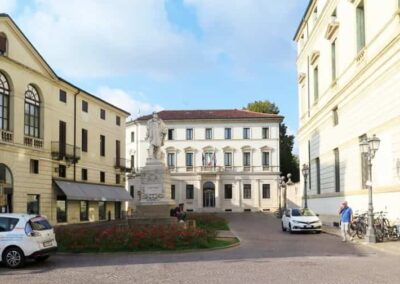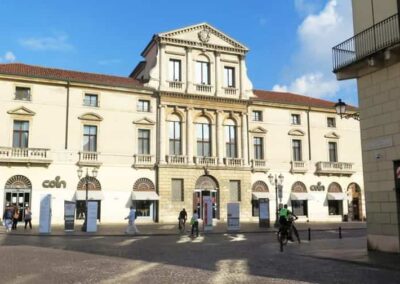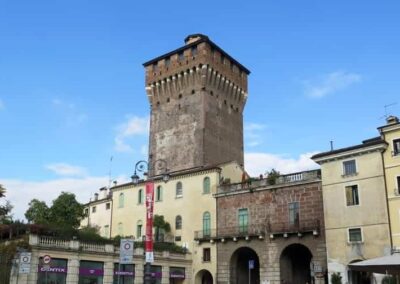HOME
THE REGIONS OF ITALY
PLACES IN ITALY
Italy in Photos
Piazza dei Signori, 36100 Vicenza, Italy (October 2018)
Vicenza
Vicenza, a city in northern Italy’s Veneto region, is renowned for its architectural splendour, artistic heritage, and deep historical roots. Often referred to as the “City of Palladio,” Vicenza is famous for its association with the great Renaissance architect Andrea Palladio, whose innovative designs have left a lasting mark on the city’s landscape. Situated between Venice and Verona, Vicenza combines the charm of a smaller, less touristy Italian town with the cultural richness of a major historical site, making it a must-visit destination for lovers of art, architecture, and history. The city’s history dates to Roman times, when it was known as Vicetia, and traces of this ancient past can still be found in various archaeological sites and the layout of the city. However, it was during the Renaissance that Vicenza truly flourished, thanks to the genius of Andrea Palladio, who lived and worked here in the 16th century. Palladio’s architectural style, characterized by harmonious proportions, classical elements, and elegant simplicity, had a profound influence not only on the architecture of Italy but also on the development of Western architecture. His works in Vicenza earned the city a place on the UNESCO World Heritage list. One of the most famous landmarks in Vicenza is the Basilica Palladiana, located in the heart of the city’s main square, Piazza dei Signori. This majestic building, originally constructed in the 15th century, was redesigned by Palladio in the mid-1500s. Its distinctive loggia, with elegant arches and columns, is a hallmark of Palladio’s architectural vision and serves as a centrepiece of the city’s historic centre. Today, the Basilica Palladiana hosts exhibitions and cultural events, adding a modern vibrancy to this centuries-old structure. Another Palladian masterpiece in Vicenza is the Teatro Olimpico, one of the world’s oldest indoor theatres. Built in 1580, it is Palladio’s final work and remains a stunning example of Renaissance architecture. The theatre’s wooden stage set, which features an intricate illusion of a classical cityscape, is one of its most remarkable features. The theatre still hosts performances today, allowing visitors to experience both the historical and artistic significance of this extraordinary venue.
Beyond Palladio’s masterpieces, Vicenza is also home to several stunning villas designed by the architect, located in and around the city. The most famous of these is Villa La Rotonda, a masterpiece of symmetry and proportion, often regarded as one of Palladio’s most iconic works. Located just outside the city centre, Villa La Rotonda epitomizes Palladio’s ability to blend architecture with nature, offering visitors a serene and inspiring glimpse into the world of Renaissance design. Vicenza’s artistic heritage extends beyond Palladio. The city’s museums, such as the Museo Civico in Palazzo Chiericati (another Palladian building), house collections of Renaissance and Baroque art, as well as archaeological artifacts that trace the city’s history. The Duomo di Vicenza, with its origins in the early Christian period, and the Church of Santa Corona, where Palladio himself is buried, are other notable religious sites that add to the city’s rich cultural landscape. While Vicenza is steeped in history, it is also a vibrant, modern city with a lively atmosphere. Its pedestrian-friendly streets are lined with shops, cafes, and restaurants, where visitors can sample local Veneto cuisine. Dishes like baccalà alla vicentina, (salted cod) and bigoli (a thick, hand-rolled pasta) are regional specialties that reflect the city’s culinary traditions. In addition to its cultural and architectural attractions, Vicenza is also a gateway to the natural beauty of the Veneto countryside. The rolling hills surrounding the city are dotted with vineyards, offering wine lovers the chance to explore the region’s wine routes, which produce excellent wines such as Prosecco and Torcolato. Vicenza is a city where history, architecture, and culture converge. Its association with Andrea Palladio, whose works has left an indelible mark on the city, makes it an essential destination for those interested in Renaissance art and design. Whether you’re strolling through its elegant squares, exploring its world-famous villas, or enjoying its culinary delights, Vicenza offers a rich and immersive experience of Italy’s architectural and cultural heritage.
Worth a Visit
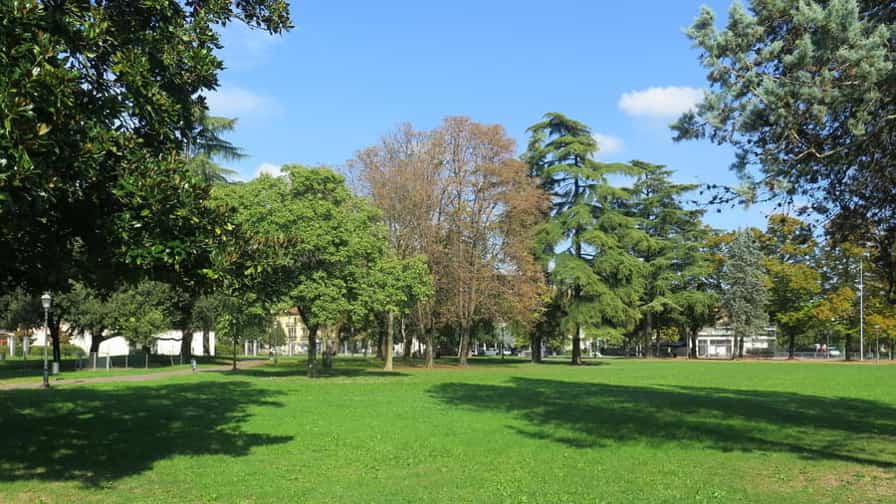
Campo Marzo is one of the largest and most historic public parks in Vicenza, Italy. Located just a short walk from the city’s main train station and close to the historic center, it has long served as both a green space and a gathering point for locals and visitors. Its origins date back to Roman times, when it was used as a military training ground, hence the name “Campo Marzo,” or “Field of Mars.” Over the centuries, it has been redesigned and reshaped into a wide, tree-lined park that offers pathways for walking, cycling, and leisure. Today, the park is a place where people come to relax, exercise, and enjoy open-air events, from markets to concerts. While it has faced periods of decline, ongoing urban renewal projects aim to restore its role as a vibrant and safe cultural hub, blending history, nature, and community life.
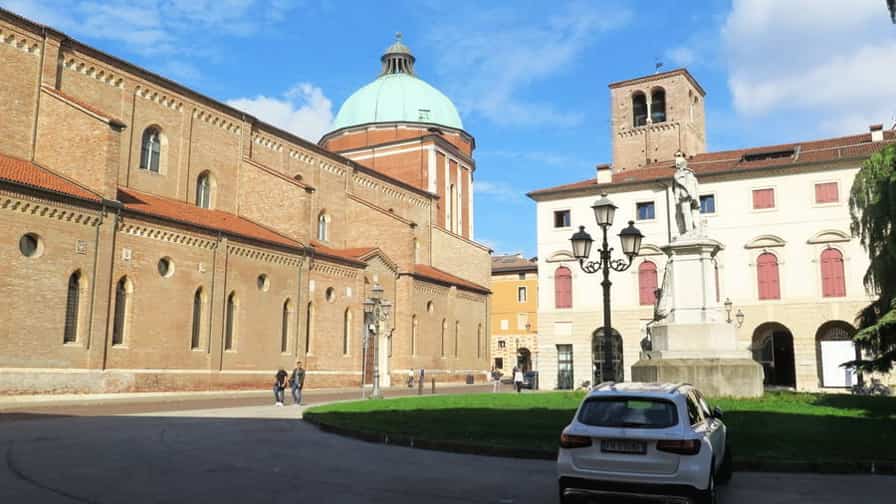
Piazza del Duomo is one of the most significant squares in Vicenza, Italy, known for its rich history and architectural charm. Situated in the heart of the city, it takes its name from the nearby Cathedral of Santa Maria Annunciata, often referred to simply as the Duomo. The square has been a central meeting place for centuries, reflecting Vicenza’s blend of medieval and Renaissance heritage. Surrounded by elegant palaces, shops, and cafés, it offers a welcoming atmosphere where daily life and tradition come together. The Duomo itself, with origins dating back to the 11th century and later modifications influenced by Andrea Palladio, dominates the square with its stately façade. Piazza del Duomo also hosts civic and religious events, making it both a cultural landmark and a social hub. Today, it remains a favourite spot for locals and visitors alike, combining history, spirituality, and community in the city’s vibrant core.
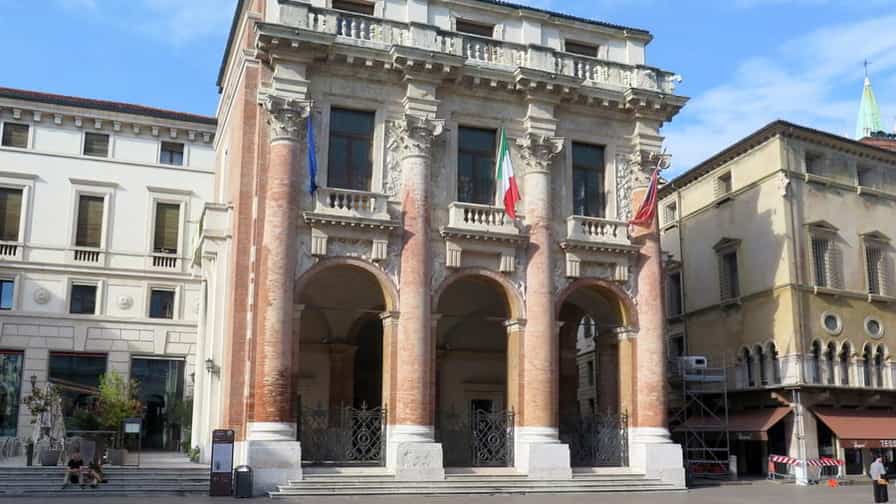
Piazza dei Signori is the beating heart of Vicenza’s historic centre, a rectangular square that has served since ancient times as political, commercial, and social hub. Originating as the Roman forum, later known in the Middle Ages as the Peronio, it evolved into the centre for markets, civic institutions and public life. Dominating one long side of the square is the Basilica Palladiana, with its graceful loggias by Andrea Palladio, alongside the soaring Torre Bissara. Opposite stand the Loggia del Capitaniato (also by Palladio), the Palazzo del Monte di Pietà, including the Church of San Vincenzo, and the two symbolic columns, one carrying the Lion of St. Mark, the other Christ the Redeemer. Over centuries, from Venetian rule to modern times, Piazza dei Signori has preserved its importance as a place of gatherings, commerce, architecture, and cultural events, remaining Vicenza’s “salotto”, its living room.
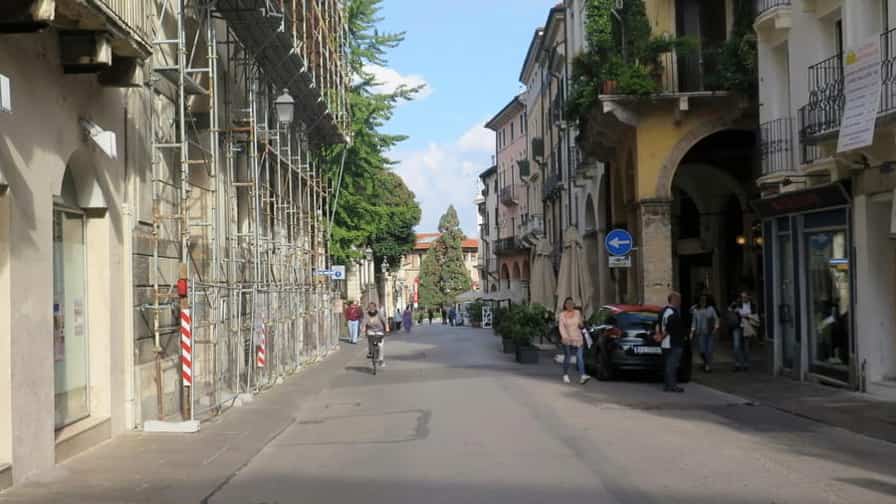
Corso Andrea Palladio is the main street of Vicenza, Italy, and one of its most elegant and lively thoroughfares. Stretching through the historic centre, it is named after the renowned Renaissance architect Andrea Palladio, whose influence is deeply felt throughout the city. The street is lined with palaces, churches, and historic buildings that showcase centuries of architectural evolution, many reflecting Palladian style or inspired by his designs. Corso Palladio has long been a focal point of social and commercial life, bustling with shops, cafés, and boutiques that attract both locals and visitors. Walking along the avenue offers a journey through Vicenza’s past, from medieval structures to refined Renaissance façades. It also connects several key squares and landmarks, making it a natural starting point for exploring the city. Today, Corso Andrea Palladio remains the vibrant spine of Vicenza, blending history, culture, and daily life in a timeless atmosphere.
Photo Gallery of Walk 1 – Viale Milano to Piazzetta Andrea Palladio
Approximately 2.29 km – 1.42 miles
The walk starts in Viale Milano – Piazzale Bologna – Campo Marzo – Viale Venezia – Viale Dalmazia – Viale Eretenio – Ponte Furo – Contrà delle Grazie – Contrà Carpagnon – Contrada Oratorio Dè Proti – Stradella dei Tre Scalini – Contrà Giuseppe Garibaldi – Contrà Fontana – Piazza del Duomo – Contrà Vescovado – Piazza del Duomo – Contrà Giuseppe Garibaldi – Via Cesare Battisti – Contrà Pescherie Vecchie – Contrà Muschieria – Piazzetta andrea palladio
Photo Gallery of Walk 2 – Piazza dei Signori to Corso Andrea Palladio
Approximately 1.48 km – 0.92 miles
The walk starts in Piazza dei Signori – Piazza della Biade – Contrà Daniele Manin – Corso Andrea Palladio – Contrà Santa Corona – Corso Andrea Palladio – Piazza Matteotti – Corso Andrea Palladio
COPYRIGHT © 2018-2025 ITALY IN PHOTOS - ALL RIGHTS RESERVED
